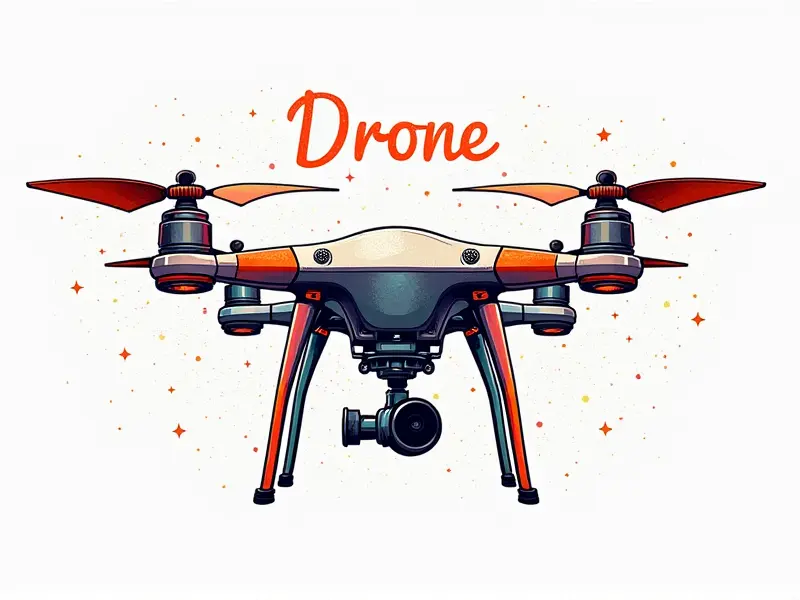How to fly DJI drone safely

Stay Legal: Safe DJI Drone Flight Laws
Flying a DJI drone safely starts with understanding and adhering to the legal requirements set by your local aviation authority. In the United States, for instance, the Federal Aviation Administration (FAA) mandates that all drones weighing more than 0.55 pounds must be registered with the agency before they can be flown outdoors.
Additionally, you need to familiarize yourself with airspace regulations and obtain any necessary permits or waivers if your intended flight area is near airports, military bases, or other restricted areas. Always check local laws and guidelines for specific requirements in your region.
Master Safe DJI Drone Flight Techniques
To ensure safe operation of your DJI drone, mastering the basic flying techniques is crucial. Start by familiarizing yourself with the remote control interface and understanding how to adjust settings such as flight modes, gimbal angles, and camera parameters.
- Pre-flight Checks: Always perform a thorough pre-flight inspection of your drone's battery levels, propellers, and any other critical components.
- Flight Mode Selection: Choose the appropriate flight mode based on your mission requirements. For instance, use Position Mode for GPS-based navigation or Sport Mode for high-speed maneuvers.
- Gimbal Control: Learn how to adjust the gimbal pitch and roll angles to stabilize your footage during flights.
Top 5 Safety Checks for DJI Pilots
Before each flight, conduct these essential safety checks to ensure a smooth operation:
- Battery Condition: Verify that all batteries are fully charged and in good condition.
- Propellers: Inspect propellers for any damage or debris. Ensure they are securely attached.
- GPS Signal: Confirm a strong GPS signal before takeoff to maintain stable flight paths.
- Remote Control: Check the remote control's battery level and ensure all buttons work correctly.
- Software Updates: Ensure your drone’s firmware is up-to-date for optimal performance and safety features.
Emergency Protocols for DJI Drones
In case of an emergency, knowing the right steps to take can prevent accidents. Here are some critical protocols:
- Return to Home (RTH): If your drone loses connection or encounters a problem, activate RTH immediately.
- Battery Low Warning: Land the drone as soon as you receive a low battery warning to avoid unexpected crashes.
- Manual Override: In situations where automated features fail, manually control your drone to land safely.
Smart Battery Management for DJI
Maintaining optimal battery health is crucial for safe and efficient flights. Follow these tips:
- Charge Properly: Use the recommended charger and avoid overcharging or undercharging batteries.
- Store Safely: Keep batteries in a cool, dry place away from flammable materials.
- Monitor Health: Regularly check battery health indicators to detect any potential issues early.
Weatherproof Your DJI Drone Flights
Flying your drone in adverse weather conditions can be dangerous. Here are some tips for safe operation:
- Avoid Windy Conditions: Strong winds can destabilize the drone and cause it to crash.
- Check Humidity Levels: High humidity can affect electronic components, so avoid flying in foggy or rainy conditions.
- Temperature Extremes: Extreme cold or heat can impact battery performance. Opt for moderate weather when possible.
Avoiding Common DJI Drone Mishaps
Prevent common issues by following these guidelines:
- Obstacle Avoidance: Use the drone's obstacle avoidance sensors to navigate safely through complex environments.
- Proximity Awareness: Be aware of your surroundings and maintain a safe distance from people, buildings, and other objects.
- Data Security: Protect your data by regularly backing up footage and securing the drone's storage system.
Essential Safety Rules for DJI Drones
Adhere to these fundamental safety rules to ensure a safe flying experience:
- No Fly Zones: Respect no-fly zones as designated by aviation authorities and avoid flying in restricted areas.
- Visual Line of Sight (VLOS): Maintain visual contact with your drone at all times to control its movements effectively.
- Flight Logs: Keep detailed records of each flight for compliance and troubleshooting purposes.
Beginner's Guide to Safe DJI Flying
If you're new to flying a DJI drone, start with these beginner-friendly tips:
- Practice in Open Areas: Begin your training sessions in open fields or parks where there are no obstacles.
- Learn Basic Maneuvers: Master basic flight maneuvers like takeoff and landing before attempting more complex operations.
- Use Simulation Tools: Utilize DJI's simulation software to practice flying in a risk-free environment.
Maximize Flight Safety with DJI Drone Best Practices
To enhance your flight safety, follow these best practices:
- Regular Maintenance: Perform routine maintenance checks on your drone to ensure all components are functioning correctly.
- Flight Planning: Plan your flights carefully by considering factors such as weather conditions and airspace regulations.
- Continuous Learning: Stay updated with the latest safety guidelines and advancements in drone technology.
Protect Yourself and Others While Flying DJI
Safety is paramount when flying a DJI drone. Here are some additional tips to protect yourself and others:
- Wear Protective Gear: Use protective eyewear and headgear to safeguard against potential accidents.
- Inform Others: Inform people in the vicinity about your flight plans to avoid any misunderstandings or panic.
- Emergency Kit: Carry an emergency kit with basic medical supplies and communication devices.
Conclusion
Flying a DJI drone safely requires a combination of legal compliance, technical proficiency, and situational awareness. By adhering to the guidelines outlined in this article, you can enjoy your flights while minimizing risks and ensuring a positive experience for everyone involved. Remember, safety should always be your top priority.

